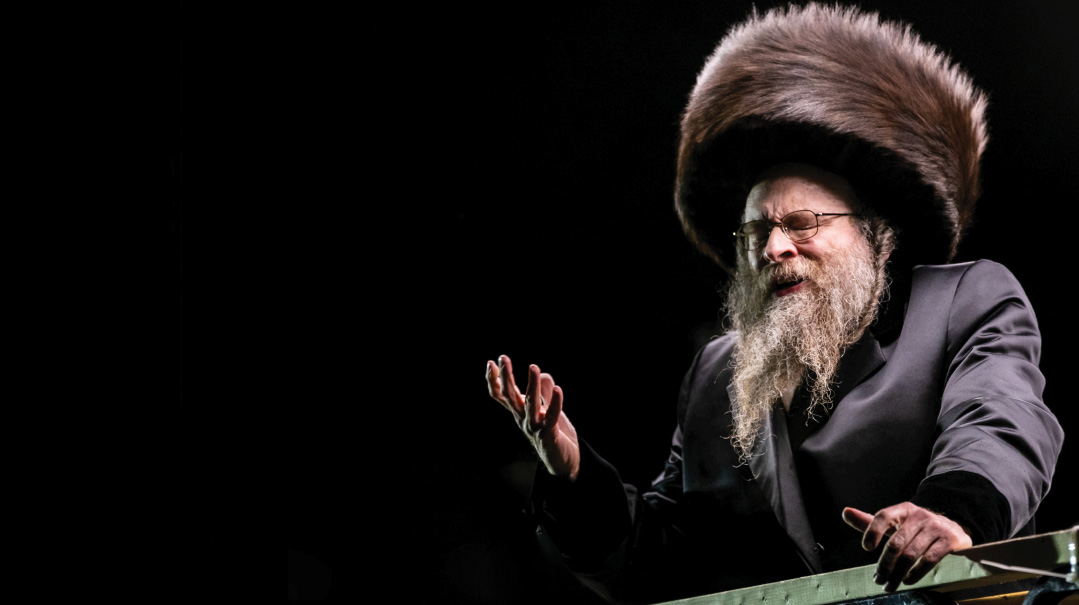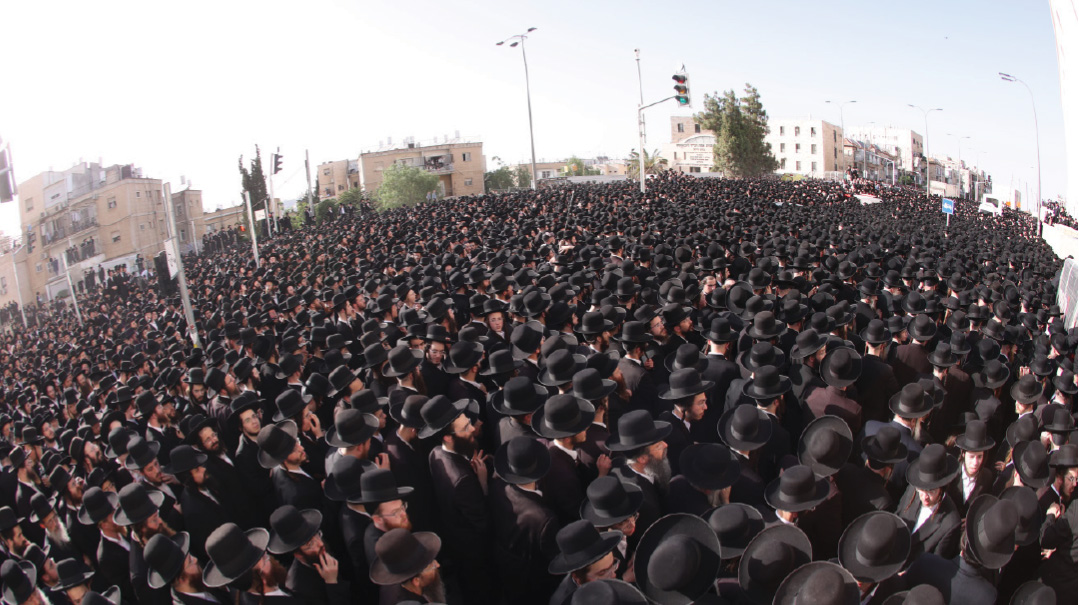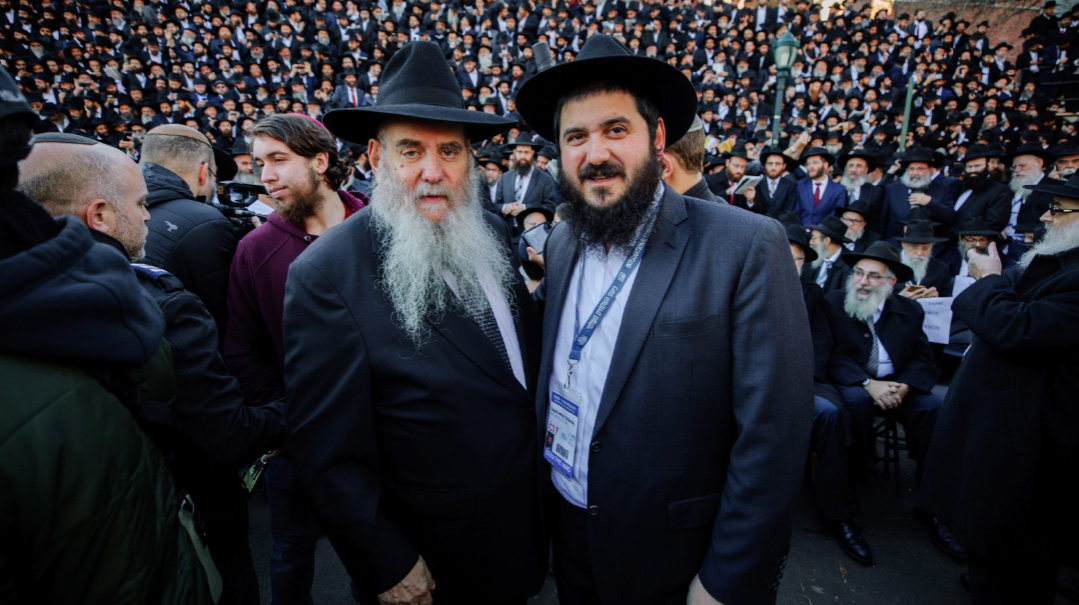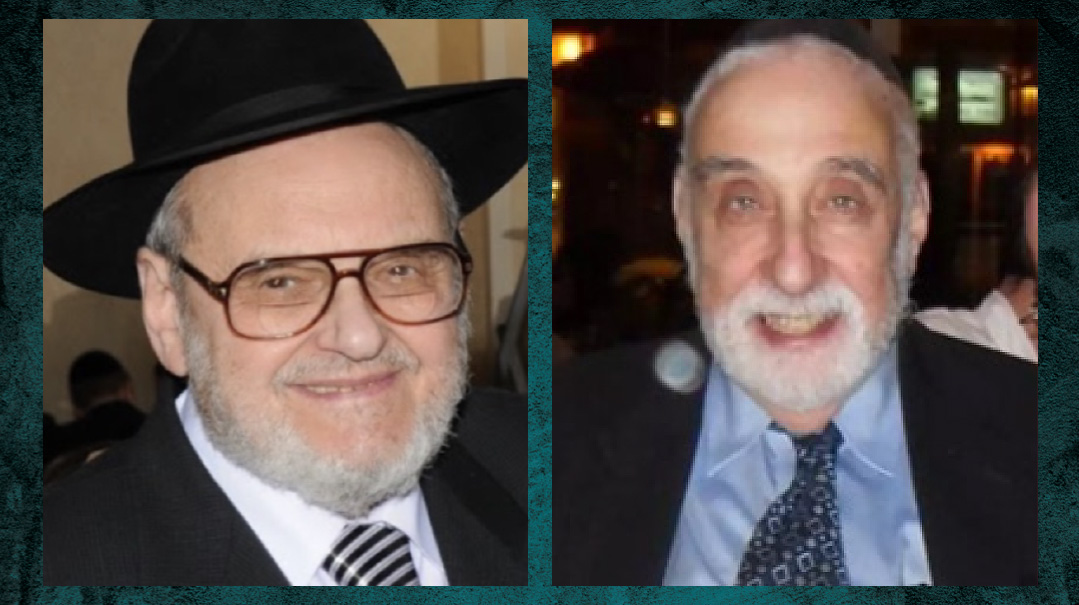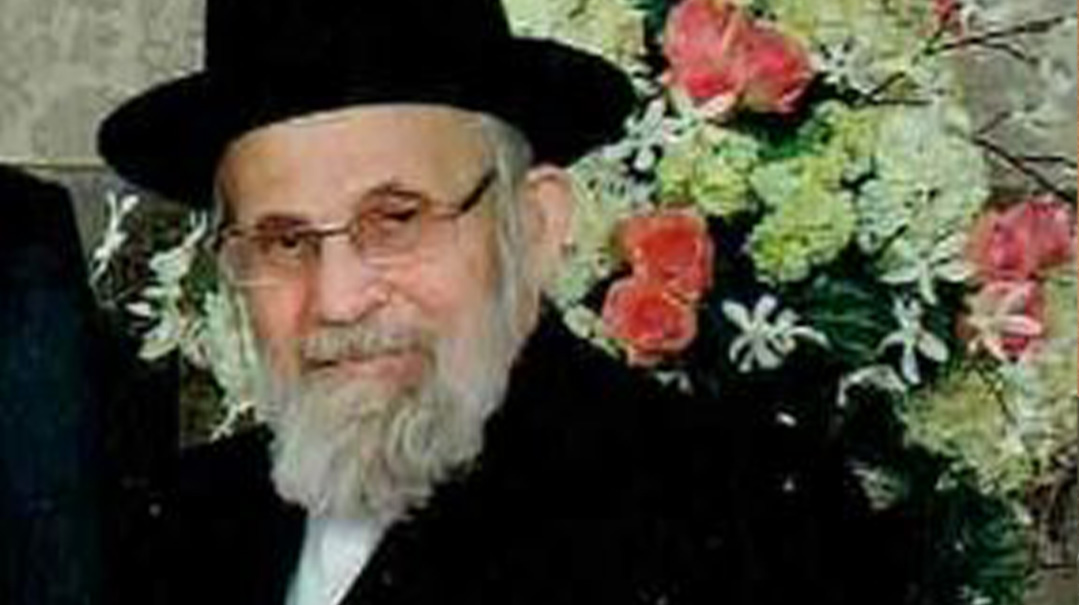Brick by Brick

In tribute to Naftali Tessler
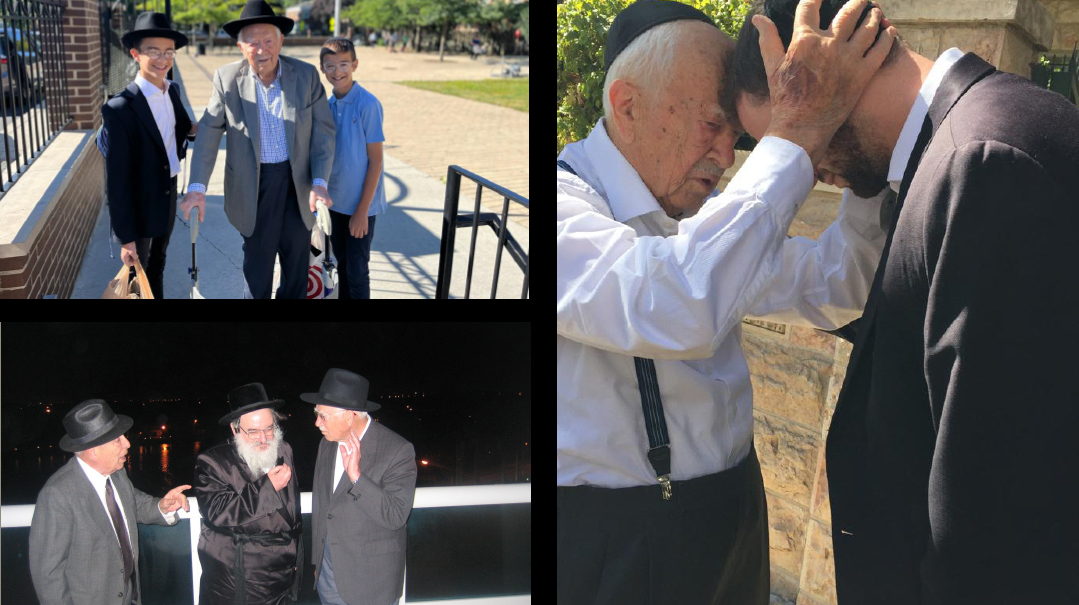
Reb Naftali Tessler was a fixture in the Chicago Jewish community. An adored personality and renowned philanthropist, he lived a simple, private life and never put on airs. But beneath his simple exterior was the lofty soul of someone who had looked evil in the eye and prevailed.
Reb Naftali, who passed away last week at 97 years old, knew that building a Jewish family and contributing to Klal Yisrael’s future was his ultimate revenge against the Nazis
Reb Naftali Tessler would stroll out of shul with an energy that defied his age, and people gravitated toward him. He would crack a joke, share a tidbit, smile and hand candy to the children.
The more sensitive folks in the crowd would push forward and ask him for a brachah.
“A brachah?” He’d raise his eyebrows, half amused, half perplexed.
“Yes, a brachah,” the petitioner would reiterate.
And Reb Naftali would consent, issuing a heartfelt blessing before continuing on home. Those who made the request were wise indeed — and in good company.
“We once went to Rav Aharon Leib Steinman,” says Reb Dovid Tessler, a son of Reb Naftali, “and the gabbai told us that he wasn’t seeing anyone. But another gabbai leaned forward and said, ‘You know who this is? This is Reb Naftali Tessler from Chicago!’ The gabbai granted my father entry, stipulating that he had only five minutes.”
Forty-five minutes later, the door opened. “And we saw Rav Steinman asking my father for a brachah.”
Because the gadol hador saw that the soul beneath the small-brimmed hat and white mustache was aflame enough to consume the fires it once endured.
His brachah was well worth receiving.
In the Valley of Death
The first 17 years of Naftali Tessler’s life were serene and uninterrupted — modest materially but charged with a unique spiritual advantage. He grew up in the Romanian town of Viseu, and his father, Reb Shlomo Tessler, was a chavrusa and close confidant of the Vishiveh Rav, a tremendous talmid chacham and author of the sefer She’eiris Menachem. The Rav was a son of the Vizhnitzer Rebbe, the Ahavas Yisrael, and Reb Shlomo’s relationship with him followed a generations-long connection between the Tessler family and the Vizhnitzer dynasty.
But then came 1944, and the Tesslers — all nine children along with their parents — were loaded into cattle cars jammed with hundreds of others as they rattled for three days toward the unknown.
“For most of his life, my father wouldn’t talk about the Holocaust,” Reb Dovid says. “He would only make comments like, ‘Eat that, in the lager we didn’t have such food.’ But about 25 years ago, he started telling the stories.”
Upon emerging from the cattle car, the Tesslers were met by a boy who had grown up on their block. He was an ethnic German, but in the name of neighborliness, the Tesslers would send over cookies whenever there was a birthday in the family. Now, the boy stood in Nazi uniform as the dazed Jews were herded off the train.
“Hello, Esther,” he sneered as Mrs. Tessler emerged.
Naftali, together with his father and two brothers, were separated from his mother and six younger siblings. Their heads were shaven, and they were given prisoner uniforms and then placed in the barracks. After a few days, Naftali approached a kapo.
“Where is my mother?” he asked. “Where are my siblings?”
The kapo pointed to the smokestack looming overhead. “They’re there.”
After six weeks in Auschwitz, the Nazis deported Naftali, together with his father and older brother, to Warsaw. The younger brother was taken to Buchenwald.
In Warsaw, they were tasked with loading bricks remaining from the rubble of the ghetto onto pallets, which would then either be sold to the Poles or shipped to Germany.
Together with them was a man whose eyes burned with brilliance. Rav Yekusiel Yehuda Halberstam, the Klausenburger Rebbe.
“The Rebbe didn’t have the strength to fill his quota of bricks,” Reb Naftali would share, “and so I, together with a few younger men, did the work for him.”
Reb Naftali recounted how once, seemingly out of nowhere, a man emerged from underground. “He had been hiding in the sewer beneath the ghetto. But he came up because we, at least, were given a meager amount of food.”
The new addition put them all at risk, though. The Nazis had an obsession with counting the Jews, holding daily appels to keep an exact tally. Should they find an addition to yesterday’s number, all the prisoners would be endangered. But things worked out because “someone died the night before and we buried his body. The numbers matched.”
On a swelteringly hot Tishah B’Av, the Nazis rounded up the Jews and sent them on a days-long death march toward Dachau. They were given no food or water. The Tessler boys carried their father for much of the way. At one point, Reb Naftali recounted, they passed a river. In their desperation, some Jews raced forward and began drinking.
“Don’t go,” Reb Shlomo Tessler cautioned his children.
They didn’t, and watched as the Nazis raised their rifles and shot all the Jews at the river.
“The river turned red with blood,” he would finish.
The Tesslers somehow made it alive to Dachau and were placed in a sub-camp called Muhldorf. Reb Shlomo was assigned to a job in the kitchen, while Naftali worked in a cement factory.
“One day, I was completely white with cement dust,” Reb Naftali shared. “The Nazis thought I was pale to the point that I was barely alive, and so they put me on the list for the gas chambers.”
But from his position in the kitchen, his father was able to remove his son’s name from the list.
Naftali was then assigned to a new job. As the war reached its final phase, the Allies bombed the railways, preventing the Nazis from transporting goods via train. Instead, they developed a system of riding a train until the rails ended and then off-loading the goods onto a waiting truck. This task was assigned to a group of Jews, Naftali included.
“One day,” Reb Naftali recalled, “I realized it would soon be Pesach.”
One of the products the Nazis were transporting was grain. Naftali saw this as a fortuitous opportunity, and split open the sacks. And then “each day, I took a handful and hid it in my pants. This was a capital offense. If I had been caught, I would have been killed.”
Naftali would then give the grain to his father in the kitchen, who would grind it with a stone, producing a modest collection of flour. The flour was mixed with water and then baked in a burning oven. When Pesach came, they had about 12 matzos, each the size of the palm of a hand.
“We gave the matzos to the Klausenburger, who announced, ‘Maror we don’t need, wine we don’t have. But we have matzos.’ ”
The people lined up, and the Klausenburger handed out a small piece of matzah to everyone.
Time passed and Germany was losing badly. The allies were closing in, and in an effort to conceal the extent of their atrocities, the Nazis loaded the Jews of Dachau onto a train to take them to a forest to be shot. En route, the train was bombed, and many soldiers ran away. Some Jews tried escaping as well, but the Nazis shot them.
The next day, the soldiers returned and resumed the journey into the forest. But again, the train was bombed, and this time the soldiers ran away, never to return. After a few hours of silence, Reb Shlomo gave the go-ahead to open the doors to the train and disembark. It was the end of April 1945, and the Tesslers were free at last.
Chaotic Freedom
The war may have been over, but the Tesslers weren’t yet destined to live any semblance of a normal life.
“It was total chaos,” Reb Naftali said. “There was no government. Everyone was trying to find surviving family members.”
For Naftali, the first line of order was to try and locate his younger brother from whom he had been separated in Auschwitz.
He began conducting a search, leaving no stone unturned, visiting anywhere that might hold a remote clue as to his brother’s whereabouts. One day, Naftali was in a hospital when he heard a familiar voice. He turned to look, but the boy he saw lying in the bed was emaciated beyond recognition. Still, the voice was unmistakable — this was most certainly his brother. Naftali then learned the tragic circumstances leading to his brother’s hospitalization. Earlier that year, in the frigid winter, his brother had found an abandoned Nazi uniform. Desperate for warmth, he dressed himself in the uniform, but was shot in the leg by an American soldier who thought he was a Nazi. When the mistake was discovered, he was rushed to a hospital.
Naftali realized his brother wasn’t being given the care he needed, and he told the doctor that he would be arranging for his brother’s transfer to a new hospital. The doctor, who was Hungarian, adamantly refused.
“No,” he insisted, “he is in my care. You can’t remove him.”
“I pinned him against the wall,” Reb Naftali recalled, “and said, ‘You didn’t win the war. You lost. My brother is coming with me.’ ”
He ultimately found his brother a more competent hospital; after 13 surgeries, he began to heal. The four Tesslers may have been liberated, but they were starving. They went from house to house, knocking on doors. Homeowners would come to the windows and stare at the bedraggled skeletons on their doorstep. The Tesslers would motion that they needed food, but no German would help them.
“We were covered in lice,” Reb Naftali explained, “ and no one would let us in.”
One day, an American soldier observed them as they made their pitiful rounds and asked how he could help.
“Food,” they said desperately, “we need food.”
The soldier burst into the nearest home.
“Out!” he ordered the housewife. “Get out!”
The woman was startled. “Get out? But this is my home!”
The soldier drew a gun. “You will get out — one way or another!”
The German family was ousted, and the Tesslers stepped inside. They ate, bathed, and, for the first time in a year, slept in beds. They finally had clothing to wear.
“We had everything we needed,” Reb Naftali said, “but we didn’t have klei kodesh. We needed tefillin, tzitzis, and yarmulkes.”
There were no Jews in the town anymore, but there had once been a Jewish kehillah there. The Tesslers realized it was possible that old tefillin and tzitzis were buried in the cemetery. They headed off to the local Jewish cemetery and approached the gentile attendant, inquiring where any old Jewish articles might be interred.
“There aren’t any,” he said, “we only have corpses here, no Jewish articles.”
“We sensed he wasn’t telling the truth,” Reb Naftali said, “and so we pinned him against the wall.”
As soon as they did that, they knew something was strange. The sharp contact against the wall produced a hollow echo. The Tesslers pounded on the wall until it cracked open, revealing mounds of silver menorahs, atzei chayim, breastplates, and… piles of tzitzis, tefillin, and yarmulkes. They took the klei kodesh, leaving the silver behind, and went back to Munich where their father was staying.
At some point, Naftali decided he wanted to go to Palestine. He left at night in a covered truck with a group organized by the Bericha Movement (an effort to facilitate Jewish emigration to Palestine). The region where the port was located was guarded by the allies and various members alternated manning the post. The group had bribed the French to allow them entry, and they scheduled the truck to arrive during the French shift. However, the truck broke down and, by the time they fixed it, the British had assumed the post. When the truck pulled up, the British guards demanded to see the cargo. The driver demurred but the British said, “You didn’t bribe us. Let us see the cargo.”
Upon being discovered, the group was denied entry and put up in a monastery for the night. The boat did not wait for them.
That ship turned out to be the Exodus, which carried 4,515 passengers, the largest-ever number of illegal immigrants to Palestine.
Crossing the Ocean
The Tesslers had no desire to remain in blood-soaked Germany, and a cousin living in New York sponsored their visas to America. Naftali arrived at the home of his cousin, who welcomed him warmly.
“I arrived with a suitcase and ten dollars,” Reb Naftali shared, “I used five dollars to send a telegram to my father telling him I had arrived safely.”
Naftali’s cousin presented him with an enticing offer. “I’ll pay for you to go to college,” he said. “You’ll be able to get a good job and live a good life. The only thing is you’ll have to work on Shabbos. You can go to shul, but then you’ll have to go to work.”
Naftali declined the offer and left his cousin’s home, moving out and renting a room. He would take odd jobs to support himself, serving as a waiter in the Catskills during the summer months and then in the Miami hotels in the winter.
At some point, he tried running a grocery. He was just barely getting by when someone approached him and recommended that he meet Chaya Sarah Hoffman, known by her English name, Edith. A date was arranged, and the two were soon married.
“My mother was Hungarian and came from a very wealthy, aristocratic family,” Reb Dovid says. “She grew up with cleaning help, cooks, and laundresses.” She spoke Hungarian and no Yiddish, while Reb Naftali spoke Yiddish and no Hungarian.
“If, before the war, someone had suggested this young Romanian boy to my father,” Mrs. Tessler would say, “he would have been insulted!”
Their backgrounds were widely disparate, but their futures were inextricably bound.
“They had a beautiful marriage that lasted 58 years,” Reb Dovid reflects.
Fourteen years ago, Mrs. Edith Tessler passed away, and Reb Naftali kept a picture of her on the dining room table ever after.
“He never got over it,” says Reb Dovid. “He had such reverence for her.”
The newly married couple struck their roots in New York, and Reb Naftali continued to struggle to make a living. But they weren’t doing particularly well, and they decided to move to Chicago, where Mrs. Tessler’s sister lived, hoping for a change in fortune. There Reb Naftali dabbled a bit in a vending machine business and then worked as an insurance broker.
And then he began investing in real estate. One investment led to another, and finally, Reb Naftali began seeing significant success. But the financial bounty would not be evident in any facet of his personal life — he continued to live with understated simplicity. The prosperity would only see expression in Reb Naftali’s vast contributions to the Torah world and Klal Yisrael.
Enduring Edifices
But one mitzvah led to another. While in Eretz Yisrael for the groundbreaking of the nursing school, Reb Naftali traveled to Vizhnitz to purchase burial plots for himself and close family members. A member of the Vizhnitz yeshivah’s administration engaged him in conversation, and Reb Naftali explained that he had just made a significant donation to Laniado Hospital.
“Is there anything I can help you with?” he offered.
“Well,” the fellow said half-jokingly, “we need a building for the yeshivah.”
“Fine,” replied Reb Naftali, “I’ll give you a building.”
He wasn’t referring to seed money or an initial downpayment. Reb Naftali paid for the entire building and made sure it was state-of-the art. To ensure that his vision was carried out in full, he flew to Eretz Yisrael every three months or so to oversee the construction of the beis medrash, dormitory, kitchen, and mikveh, all funded solely by him. The Vizhnitzer yeshivah boasted the first dormitory in Eretz Yisrael with air conditioning.
Back home, Reb Naftali was a strong and vocal advocate for the Telshe Yeshivah to remain in Chicago, even as others voiced opposition. When it became necessary for Telshe to renovate, Reb Naftali offered to oversee its construction — “on condition that I don’t have to answer to anyone.” If the job were left to him alone, Reb Naftali promised, he would get it done on time and within budget. And that is what happened.
His communal activism wasn’t limited to financial contributions. Reb Naftali’s passion to ensure that his daughter receive an education in a non-coed environment is what led to the establishment of Chicago’s Hanna Sacks Bais Yaakov High School.
“When hair grows on the palm of my hand, there will be a girls’ high school in Chicago,” he was told.
But Reb Naftali insisted that this was the right thing to do — and his vision continues to be realized.
Before he had the resources to provide financial support, Reb Naftali would raise funds on behalf Arie Crown Hebrew Day School — and Mrs. Tessler would volunteer in the school’s kitchen.Chicago’s Veitzener Cheder is another initiative significantly funded by Reb Naftali.
Reb Dovid shares a fascinating story of his father’s willingness to step forward, without being asked, in defense of Yiddishkeit. “It was in the early 1980s, and I had just joined the business. It was Chanukah time and Chabad of Chicago wished to place a menorah in the plaza in front of the local county hall.”
The county denied permission, on the grounds that a religious symbol could not be displayed on government-owned property. When Chabad responded by pointing out the X-mas tree on display, the argument was deflected.
“Oh, no,” the county official said, “this is a secular symbol.”
“Then the menorah will be a secular symbol as well,” Chabad countered.
Ultimately, the county offered a compromise. “We’ll let you erect the menorah,” they said, “but you’ll have to put up a $100,000 bond in case we get sued.”
“My father heard about the incident,” says Reb Dovid, “and he came into my office. ‘This isn’t right!’ he said. ‘Find $100,000. I want to put up the bond.’ ”
Finding $100,000 in the early ’80s was no small task, but the Tesslers went ahead, knowing full well that if the county got sued, the money would be lost, regardless of the value of the suit.
“No one sued,” Reb Dovid concludes, “and we got the money back.”
When the Lubavitcher Rebbe learned of the story, he called Reb Naftali and invited him to visit his office when he was next in New York.
For many years, Yad Vashem’s presentations did not cater to frum values and interests. Reb Naftali singlehandedly orchestrated that exhibits be adjusted to welcome a frum audience, and he funded courses to teach Holocaust education from a religious perspective.
“I’ve seen institutions change donors,” said a director of Yad Vashem, “but, aside from Mr. Tessler, I’ve never seen a donor change an institution.”
When the Iron Curtain fell, hundreds of Russians emigrated to Chicago. Someone approached Reb Naftali and asked if he would help finance the purchase of tefillin for the Russian men.
“I can buy them tefillin,” Reb Naftali responded, “but not if they’ll only put them on for a week.”
Reb Naftali paid rebbeim to teach the men hilchos tefillin, and once he received their commitment that they’d wear tefillin daily, he purchased 200 sets.
As far-ranging as his influence was, Reb Naftali never shirked the responsibility to develop his own spiritual growth.
“Every day,” says Reb Reuven Levitin, “Reb Naftali would come to the shul for the daf yomi shiur.” And when Reb Naftali wasn’t feeling well and couldn’t make the trip, the shiur relocated to his home. Even when Reb Naftali spent time in Florida, that never warranted missing the shiur. “It was arranged for him to join via Zoom, and whenever we logged on, he was already there, waiting for the shiur to begin.”
Reb Naftali made an exception to his usual policy of avoiding luxuries when he finished Shas, which he celebrated with a lavish affair. “He felt that this was revenge against the Nazis,” says Reb Reuven, “and for that, he’d spend money.”
Each year, on the first day of school, as hundreds of excited children streamed through the doors, one man stood out as being some nine decades older than the student body’s median age.
“For the past eight years or so,” says grandson Reb Mordechai Kaplan, “my grandfather would accompany my children to school on the first day of the new school year. He would say that this was his greatest nachas. Eighty years ago, he watched the Nazis try to eradicate Klal Yisrael, and here he is, bringing his great-grandchildren to a flourishing cheder where they would be taught Torah and learn to follow the ways of Yiddishkeit.”
But he wouldn’t leave their education up to the school entirely. Reb Naftali would learn with his great-grandchildren nightly — calling them his “chavrusas.”
“This is my chiyus,” Reb Naftali once commented, “these chavrusas are why I’m still living.”
Four years ago, Yehudah Kaplan began learning Mishnayos with his great-grandfather, sometimes learning over FaceTime when Zeidy wasn’t available to learn in person. Their dream was to make a joint siyum in time for Yehudah’s bar mitzvah. But alas, they had completed five out of the six Sedorim when Zeidy was niftar.
But im yirtzeh Hashem that siyum will happen. The small-brimmed hat and white moustache may not be visible, but Zeidy will be there.
This is his nachas, his revenge, his future.
Which he built from the ground up, brick by brick.
(Originally featured in Mishpacha, Issue 995)
Oops! We could not locate your form.

